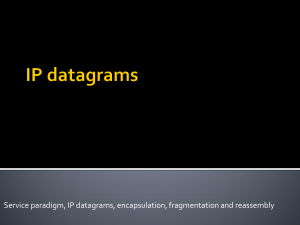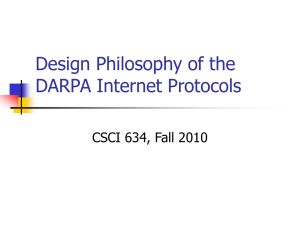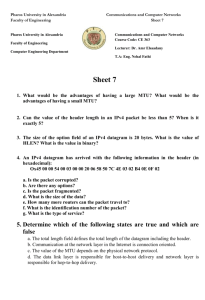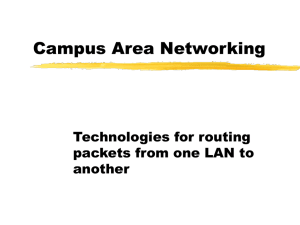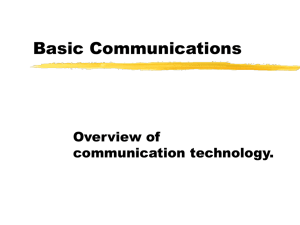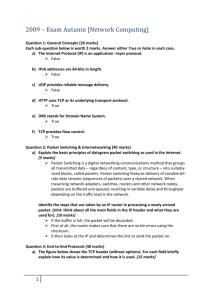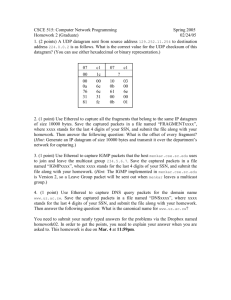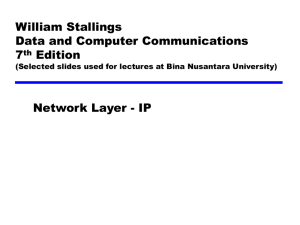Chapter 7
advertisement
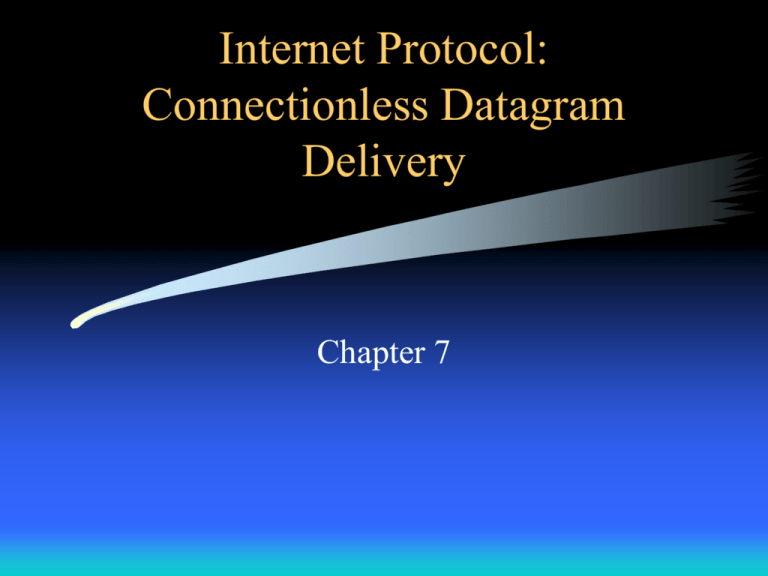
Internet Protocol: Connectionless Datagram Delivery Chapter 7 Introduction • An internet is an abstraction of physical networks because it provides the same functionality: – Accepting packets and delivering them • Conceptual layers of internet services Applications Reliable Transport Service Connectionless Packet Delivery Service Connectionless Delivery System • Service is defined as unreliable, best-effort, connectionless packet delivery system – Unreliable because delivery is not guaranteed • the packet may be lost, duplicated, delayed, or delivered out of order • the service will not detect such conditions, nor will it inform the sender or receiver - how will they know? – Connectionless because each packet is treated independently from all others – Best-effort because bad things are not done intentionally Purpose of the Internet Protocol • IP provides – the basic unit of data transfer used in a TCP/IP internet, and the format of all data – IP software which performs the routing, the path over which data is sent – a set of rules for unreliable packet delivery: how packets are processed, how and when error messages are generated, when packets can be discarded What is a Datagram? • The basic unit of information passed across a TCP/IP internet IP datagram : internet = frame : physical network • A datagram is separated into header and data areas (like a frame) as shown in Figure 7.2 – The datagram header contains IP addresses – The frame header contains hardware addresses • See Figure 7.3 Summary • IP formally specifies the format of internet packets, called datagrams • The IP datagram header contains – source and destination IP addresses – fragmentation information, precedence, and a checksum for the header – may contain options: • record routing, timestamps For Next Time • Read Chapter 8 • What else?
